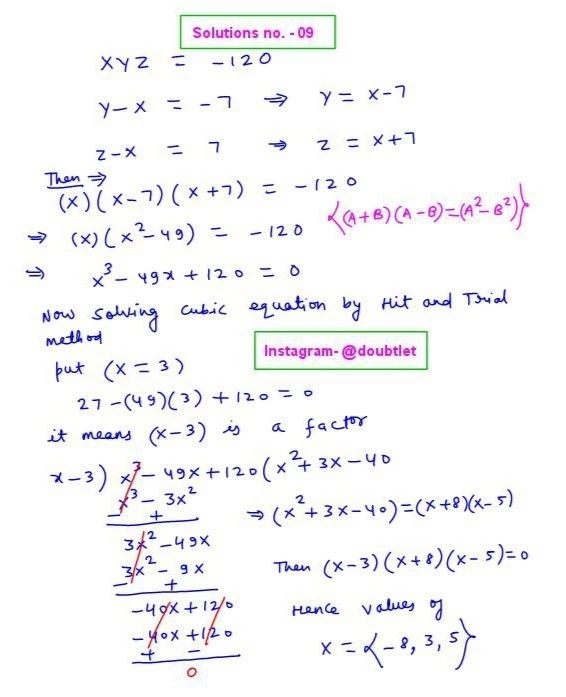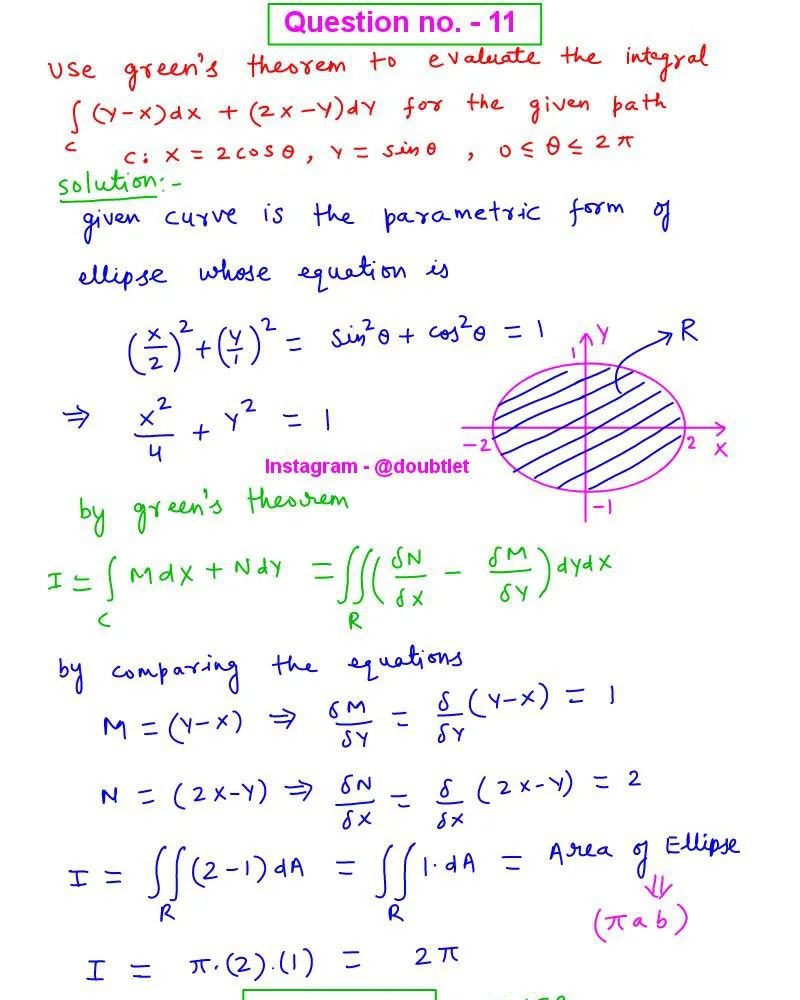









Integration by parts is a technique used to simplify the integration of products of functions. It is based on the product rule of differentiation and allows you to break down complex integrals into simpler components using the formula . This method is particularly useful when other basic integration techniques are not effective.

Neetesh Kumar | October 13, 2024
Share this Page on:
![]()
![]()
![]()
![]()
![]()
- 1. Introduction to the Integration by Parts
- 2. What is Integration by Parts
- 3. Integration by Parts Formula
- 4. Visualizing Integration by Parts
- 5. Formulas Related to Integration by Parts
- 6. Integration by Parts Solved Examples
- 7. Practice Questions on Integration by Parts
- 8. FAQs on Integration by Parts
- 9. Real-life Application of Integration by Parts
- 10. Conclusion
1. Introduction to the Integration by Parts:
Integration by parts is one of the most useful techniques for solving integrals, especially when dealing with products of functions. It’s a method that transforms a complicated integral into simpler parts, making it more manageable to evaluate. By strategically choosing which part of a product to differentiate and which part to integrate, you can break down difficult integrals. This technique is particularly helpful when traditional methods, like substitution, aren’t applicable. Whether you're studying calculus or working on more advanced mathematics, integration by parts is a critical tool in your mathematical toolbox.
2. What is Integration by Parts:
Integration by parts is a technique used to evaluate integrals where the integrand is the product of two functions. It stems from the product rule of differentiation and transforms a complex integral into simpler parts that can be more easily solved. This method is particularly useful when one part of the integrand becomes simpler after differentiation, and the other can be easily integrated.
The formula for integration by parts is:
Where:
- is a function that you differentiate.
- is a function that you integrate.
- is the derivative of .
- is the integral of .
This technique is often applied when simple integration techniques like substitution are not effective, especially when the integrand consists of products of polynomials, logarithms, exponentials, or trigonometric functions. The key to mastering integration by parts is choosing the correct and to simplify the integral.
3. Integration by Parts Formula:
The Integration by Parts formula is derived from the product rule of differentiation and is used to integrate products of two functions. It breaks down a complex integral into simpler terms that are easier to solve.
The formula is expressed as:
Where:
- is a function that is easier to differentiate.
- is the remaining part of the integrand that is simpler to integrate.
- is the derivative of (i.e., ).
- is the integral of .
This formula transforms the original integral into two parts: , and a new integral which should be simpler to evaluate. The key to using this method is choosing and wisely, typically guided by the LIATE rule, where functions are prioritized for differentiation based on the order: Logarithmic, Inverse trigonometric, Algebraic, Trigonometric, and Exponential.
4. Visualizing Integration by Parts:
Visualizing integration by parts means breaking apart a product of functions into smaller, more manageable pieces. Imagine you have an area you’re trying to calculate (the integral) comprising two interacting shapes (the two functions). Instead of calculating the whole area directly, you first calculate part of it, then subtract a smaller, simpler piece to leave you with the solution.
A graphical representation could be helpful:
- starts off complex but becomes simpler after differentiation.
- might start off simple but becomes more complex after integration.
Using integration by parts means reducing a complex integral into simpler terms, allowing us to "chip away" at the problem.
5. Formulas Related to Integration by Parts:
Besides the basic integration by parts formula, some variations and related formulas can be helpful:
-
Repeated Integration by Parts: Sometimes, using integration by parts once is not enough. You might need to apply the method multiple times, especially for higher-order polynomials or complex products. After each step, you'll continue breaking the integral into simpler parts.
-
Tabular Integration by Parts: This is a faster technique for applying integration by parts repeatedly, especially when one function becomes zero after successive differentiation. In a tabular method, you differentiate and integrate repeatedly, aligning them in a table until the integrals simplify.
-
Reduction Formula: Sometimes, integration by parts can lead to a reduction formula, which expresses an integral in terms of simpler integrals of the same type.
For example:
6. Integration by Parts Solved Examples:
Question: 1.
Find using integration by parts.
Solution:
Step 1: Choose and :
Let and .
Step 2: Differentiate and integrate :
,
Step 3: Apply the integration by parts formula:
Step 4: Solve the remaining integral:
Final Answer:
Question: 2.
Find using integration by parts.
Solution:
Step 1: Choose and :
Let and .
Step 2: Differentiate and integrate :
,
Step 3: Apply the integration by parts formula:
Step 4: Solve the remaining integral:
Final Answer:
Question: 3.
Find using integration by parts.
Solution:
Step 1: Choose and :
Let and .
Step 2: Differentiate and integrate :
,
Step 3: Apply the integration by parts formula:
Step 4: Solve the remaining integral:
Final Answer:
Question: 4.
Find using integration by parts.
Solution:
Step 1: Choose and :
Let and .
Step 2: Differentiate and integrate :
,
Step 3: Apply the integration by parts formula:
Step 4: Solve the remaining integral:
Final Answer:
Question: 5.
Find using integration by parts.
Solution:
Step 1: Choose and :
Let and .
Step 2: Differentiate and integrate :
,
Step 3: Apply the integration by parts formula:
Step 4: Solve the remaining integral:
Final Answer:
7. Integration by Parts Solved Examples:
Q:1. Evaluate .
Q:2. Use integration by parts to solve .
Q:3. Solve .
Q:4. Find the integral .
Q:5. Use the tabular method to evaluate .
8. FAQs on Integration by Parts:
What is integration by parts?
Integration by parts is a technique used to integrate products of two functions by breaking the integral into simpler parts. It is derived from the product rule of differentiation.
What is the formula for integration by parts?
The formula for integration by parts is: Where is differentiated, and is integrated.
How do I choose and in integration by parts?
To choose and , use the LIATE rule: prioritize functions in the following order Logarithmic, Inverse trigonometric, Algebraic, Trigonometric, and Exponential for , while the remaining part becomes .
Can integration by parts be used more than once?
Yes, integration by parts can be applied multiple times if the resulting integral after the first application still requires further simplification.
What is the tabular method in integration by parts?
The tabular method is a quick way to perform integration by parts repeatedly. It organizes the differentiation and integration steps into a table, especially useful when one function differentiates to zero.
When should I use integration by parts instead of substitution?
Use integration by parts when the integrand is a product of two functions where one part simplifies upon differentiation. Substitution is typically used when a function and its derivative appear within the same integral.
Can integration by parts be used with definite integrals?
Yes, the formula for integration by parts can also be applied to definite integrals:
What are common mistakes when using integration by parts?
A common mistake is incorrectly choosing and , leading to a more complicated integral. It’s important to select as the function that becomes simpler when differentiated and as the easily integrated function.
9. Real-life Application of Integration by Parts:
Part integration is widely used in physics, engineering, and applied mathematics. For example, it is used in solving problems related to:
- Work and energy: Calculating work done by a varying force in physics.
- Quantum mechanics: In solving Schrödinger's equation.
- Economics: In certain models, you must integrate products of functions representing economic factors like supply and demand.
10. Conclusion:
Integration by parts is a versatile and essential technique for solving integrals involving products of functions. Breaking down complex integrals into simpler parts allows you to solve integrals that would otherwise be difficult or impossible to evaluate directly. From mastering the basic formula to understanding its applications in real-world problems, integration by parts is a fundamental tool in calculus. This technique will become a powerful part of your mathematical problem-solving toolkit with practice.
If you have any suggestions regarding the improvement of the content of this page, please write to me at My Official Email Address: [email protected]
Are you Stuck on homework, assignments, projects, quizzes, labs, midterms, or exams?
To get connected to our tutors in real time. Sign up and get registered with us.
Coordinates Conversion Calculators
Mathematics Formula Sheet
Doubtlet's Blog Posts
Calculus Question Bank
Question and Answer Bank
Blog Information
Blog Author: Neetesh Kumar
Blog Publisher: Doubtlet
Comments(0)
Your comment will be reviewed before it is published.



Leave a comment